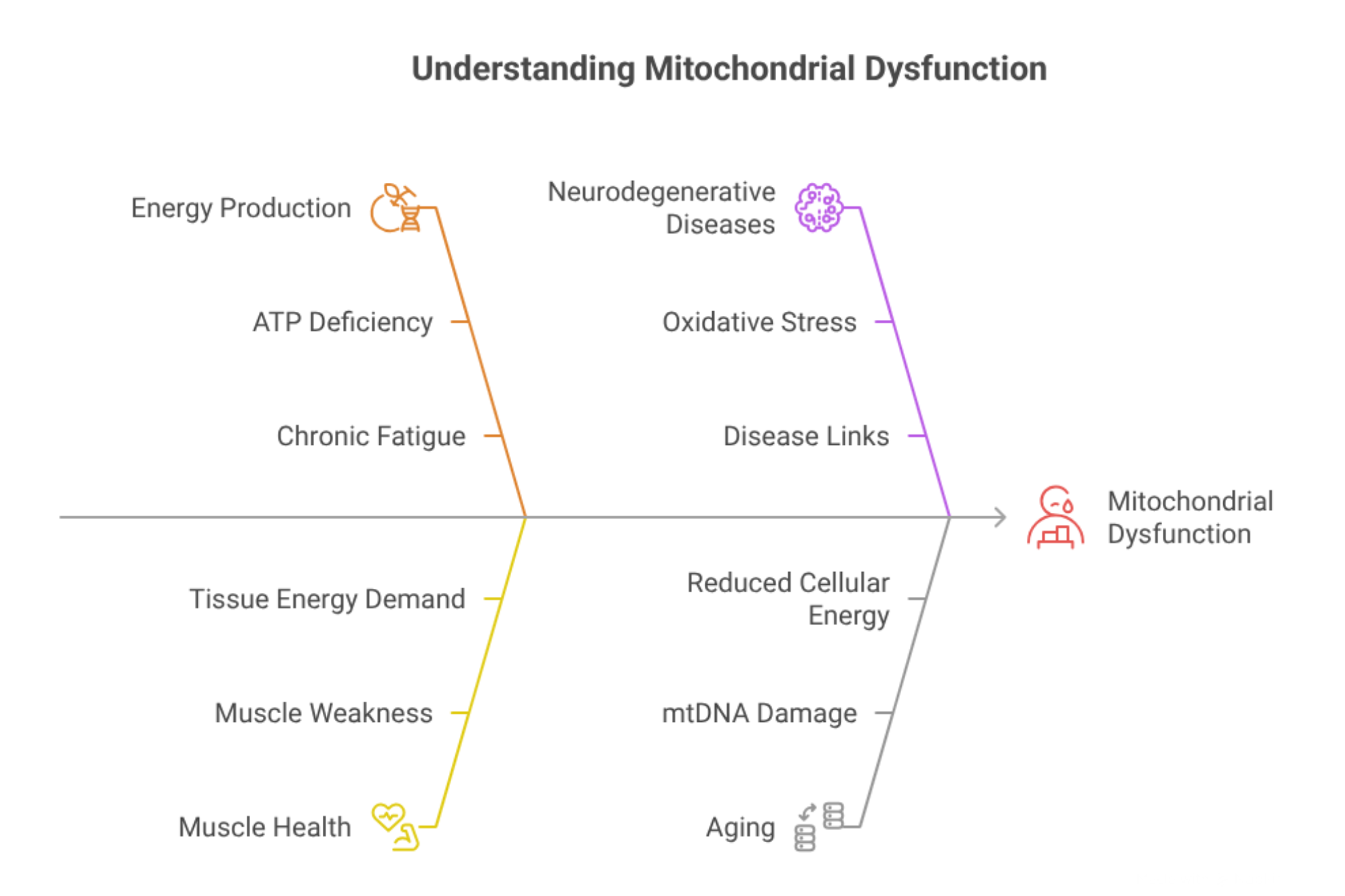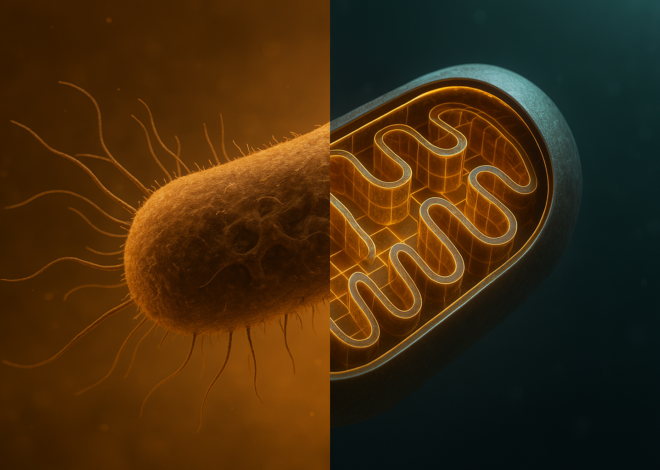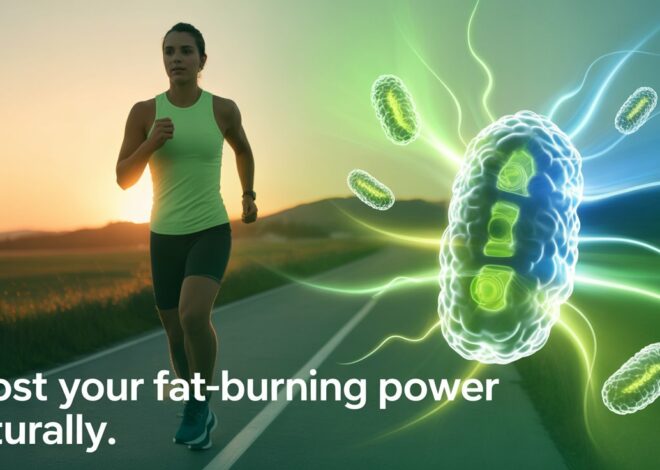
Mitochondria Function Decoded: Beyond ATP to Apoptosis, Signaling & Disease
When you were a kid in biology class, you probably memorized that mitochondria are the “powerhouse of the cell.” Neat fact — but pretty dry on its own. The truth is, mitochondria aren’t just little batteries stuck inside your cells. They’re highly evolved micro-machines that decide whether you feel sluggish or energetic, whether you recover fast after exercise or stay wiped out, whether your cells stay healthy or slide toward disease.
In this in-depth guide, we’ll break down what mitochondria actually do, how they do it, and why their role reaches far beyond simple energy production. We’ll also look at how you can support them — because when your mitochondria thrive, so do you.
What Are Mitochondria? A Quick Definition
Mitochondria are double-membraned organelles found in almost every cell of your body (except mature red blood cells, which are energy couriers themselves). Each cell can contain hundreds to thousands of these tiny organelles, depending on how much energy that cell type needs. Muscle cells, for example, are packed with mitochondria.
These structures are unique in two big ways:
- They have their own genetic material — mitochondrial DNA (mtDNA).
- They are widely believed to have evolved from free-living bacteria more than a billion years ago, which merged with larger primitive cells in a process called endosymbiosis (Margulis, Origin of Eukaryotic Cells, 1970).
This ancient alliance is why mitochondria still resemble bacteria in some ways — they even have their own ribosomes to build certain proteins independently.
Also read: Mitochondria Structure Decoded
Energy Production Adenosine Triphosphate (ATP)
At the heart of mitochondria’s fame is ATP generation — the final product of a complex chemical assembly line that transforms the calories we consume into life-sustaining energy.
- Where does it happen?
In the inner mitochondrial membrane, where the Electron Transport Chain (ETC) resides. - How does it work?
- Nutrients like glucose are broken down through glycolysis in the cytoplasm, yielding pyruvate.
- Pyruvate enters the mitochondria and fuels the Krebs cycle (aka Citric Acid Cycle), producing high-energy electron carriers: NADH and FADH₂.
- These carriers donate electrons to the ETC.
- As electrons pass down the chain, protons (H⁺) are pumped across the membrane, building a proton gradient.
- The flow of protons back through ATP synthase spins this enzyme like a turbine, catalyzing the binding of ADP and phosphate to form ATP.
| Key Stage | Location | Products |
| Glycolysis | Cytoplasm | Pyruvate |
| Krebs Cycle | Mitochondrial Matrix | NADH, FADH₂ |
| ETC & ATP Synthase | Inner Membrane | ATP |
Reference: NCBI – Oxidative Phosphorylation
This remarkable process is so efficient that mitochondria supply 90% of a cell’s total ATP. Without it, muscles fail, neurons misfire, and organs shut down.
Cellular Respiration & Energy Combustion
Many people overlook how mitochondria don’t just make ATP — they control how fuel is burned. By linking glucose oxidation with oxygen, mitochondria ensure that the energy we get from food is maximized.
- Krebs Cycle: This cycle breaks down acetyl-CoA (from carbs, fats, proteins) into CO₂ while harvesting electrons.
- ETC: Converts the energy in those electrons into a proton gradient.
- Oxygen’s Role: The final electron acceptor at the chain’s end — without oxygen, the whole system backs up, and cells switch to inefficient anaerobic pathways (like lactic acid fermentation).
This is why aerobic fitness and healthy mitochondria are inseparable: the more mitochondria you have, the more efficiently your body uses oxygen.
Also read: How Exercise Builds Mitochondrial Density
More Than Just Energy: Other Key Mitochondrial Functions
Energy might be their headline act, but mitochondria are multipurpose. Here are other vital jobs they do every second:
1. Calcium Storage & Homeostasis
Mitochondria are also the calcium banks of your cells. They rapidly take in and release calcium ions (Ca²⁺) to fine-tune signaling for:
- Muscle contraction: Heartbeats rely on synchronized calcium spikes.
- Neuronal firing: Synaptic transmission needs precise Ca²⁺ levels.
- Enzyme activation: Many metabolic enzymes switch on only in the presence of calcium.
They do this in concert with the endoplasmic reticulum (ER), shuttling ions back and forth like a well-orchestrated dance.
Reference: Frontiers in Physiology – Mitochondria & Calcium
2. Orchestrating Apoptosis (Programmed Cell Death)
When cells are damaged or infected, they need to die — cleanly. Mitochondria are executioners for this biological self-sacrifice.
- Mechanism: When signaled, mitochondria release cytochrome c into the cytoplasm.
- This activates caspases, enzymes that break down proteins and DNA.
- Controlled apoptosis prevents tumors, clears defective cells, and shapes development (like fingers separating in a fetus).
| Apoptosis Step | Key Molecule | Outcome |
| Mitochondria rupture | Cytochrome c | Caspase cascade |
| Caspase activation | Enzyme chain reaction | Cell dismantles |
Reference: PubMed – Role of Cytochrome c in Apoptosis
3. Detoxifying Byproducts
The electron transport chain isn’t perfectly efficient. As mitochondria make ATP, they also generate reactive oxygen species (ROS) — unstable molecules that can damage proteins, lipids, and DNA if left unchecked.
Fortunately, mitochondria also house antioxidant systems to neutralize these byproducts — but if the balance tips too far, oxidative stress builds up, which contributes to aging and degenerative diseases (Wallace, Genetics, 2015).
4. Metabolic Flexibility
Mitochondria help your body adapt to different fuel sources. If you haven’t eaten for a while, they can switch from burning carbs to burning fat — a process that underpins why fasting and low-carb diets shift metabolism. They’re the ultimate flexible fuel managers.
5. Generating Heat (Non-shivering Thermogenesis)
When you’re exposed to cold, your body taps brown adipose tissue (BAT) — rich in mitochondria — to generate heat.
- How? Proteins like uncoupling protein 1 (UCP1) allow protons to bypass ATP synthase.
- Instead of making ATP, the energy is released as heat.
- This is critical in newborns and hibernating animals.
Reference: Cell Metabolism – Brown Fat Thermogenesis
6. Inter-organelle Communication
Mitochondria aren’t loners. They form physical contacts with the ER called MAMs (Mitochondria-Associated Membranes).
- Purpose:
- Lipid transfer
- Calcium exchange
- Stress response signaling
When MAMs malfunction, diseases like diabetes and Alzheimer’s can emerge.
Reference: Nature Reviews Molecular Cell Biology – MAMs
A Look Inside: Structure Supports Function
So, how do mitochondria pull this off? Their unique parts work together like a tiny assembly line. Here’s a quick visual:
Key Mitochondrial Parts at a Glance
| Part | Role |
|---|---|
| Outer Membrane | Selective barrier. Lets small molecules through, blocks larger/harmful ones. |
| Intermembrane Space | Narrow gap where protons accumulate during the ETC. |
| Inner Membrane | Houses the ETC and ATP synthase. Site of oxidative phosphorylation. |
| Cristae | Folds that increase surface area for the ETC. More folds = more ATP potential. |
| Matrix | Fluid core with enzymes for the Krebs cycle and mtDNA. |
| mtDNA | Circular DNA that codes for some ETC proteins. Inherited almost entirely from the mother. |
| Mitoribosomes | Ribosomes inside the matrix that make mitochondria’s own proteins. |
What Happens When Mitochondria Dysfunction
When mitochondria work well, your cells thrive. When they struggle, problems ripple outward fast.
- Chronic Fatigue: If your mitochondria can’t produce enough ATP, you feel exhausted, no matter how much you rest.
- Muscle Weakness: Energy-hungry tissues like muscles are hit first.
- Neurodegenerative Diseases: Conditions like Parkinson’s and Alzheimer’s have links to mitochondrial dysfunction and oxidative stress (Schon et al., Annu Rev Genet, 2012).
- Accelerated Aging: Damaged mtDNA builds up over time, and fewer healthy mitochondria mean less cellular energy to repair and regenerate.

How to Support Your Mitochondria
So, what can you actually do about it? Science points to some practical steps:
🔹 Eat Colorful Whole Foods: Fruits, veggies, herbs, and spices contain antioxidants that help balance ROS and protect mitochondria.
🔹 Move Your Body: Exercise promotes the growth of new mitochondria — a process called mitochondrial biogenesis (Hood et al., J Physiol, 2006).
🔹 Sleep Well: Poor sleep disrupts energy metabolism and increases oxidative stress.
🔹 Avoid Toxins: Smoking, excess alcohol, and some pollutants increase ROS and damage mtDNA.
🔹 Stay Curious: Research into mitochondrial nutrients (like CoQ10, alpha-lipoic acid, and L-carnitine) is growing, but food and lifestyle changes are your first line of defense.
Key Points to Remember
- Definition: Mitochondria are organelles that turn food and oxygen into ATP — your body’s main energy currency.
- Main Function: Run the Krebs cycle and electron transport chain to produce about 90% of your energy.
- Other Roles: Manage cell death, detoxify free radicals, regulate calcium, and adapt your metabolism.
- Structure Matters: Their double membrane, cristae, and mtDNA make their function possible.
- Health Link: Poor mitochondrial function contributes to fatigue, aging, and disease.
| Role | Description | Significance |
| ATP Production | Converts nutrients & oxygen to ATP | Fuels all cellular work |
| Apoptosis | Controls cell death via cytochrome c | Prevents cancer, sculpts tissues |
| Calcium Buffer | Stores/releases Ca²⁺ | Muscle, nerve, enzyme function |
| Heat Generation | BAT burns energy for warmth | Vital for babies, hibernators |
| Organelle Talk | Communicates with ER | Regulates stress, lipids, metabolism |
FAQs
How do mitochondria produce ATP?
Mitochondria produce ATP through a two-stage process: the Krebs cycle in the matrix generates electron carriers, which feed the ETC in the inner membrane. Electrons moving through the ETC pump protons, creating a gradient that powers ATP synthase — the enzyme that physically binds ADP and phosphate together to make ATP. This system is remarkably efficient and explains why oxygen is so vital for complex life. Source
Why do mitochondria have so many folds?
The folds inside the inner membrane are called cristae. More folds = more surface area. This extra space holds more electron transport chain proteins and ATP synthase complexes.
In short: More folds = more ATP = more energy.
Highly active cells like heart or muscle cells have mitochondria with especially dense cristae for maximum output.
What happens if you have too many damaged mitochondria?
When mitochondria are too damaged, they can’t keep up with the cell’s energy demands. Cells may trigger apoptosis (programmed death) to remove themselves.
If enough cells fail — especially in energy-hungry organs like the brain, heart, or muscles — diseases can develop. Examples include:
Mitochondrial myopathies (muscle weakness disorders)
Parkinson’s and Alzheimer’s (neurodegeneration)
Chronic fatigue conditions
Which cells have the highest mitochondria numbers?
Cells with the highest energy demands pack the most mitochondria. Liver cells contain over 2,000 mitochondria per cell to handle detoxification and metabolism. Cardiac muscle cells are even more extreme: up to 40% of their volume is mitochondria to keep the heart beating non-stop, day and night. Source
What makes mitochondria different from other organelles?
Unlike other organelles, mitochondria have:
Double membranes: They have an outer and highly folded inner membrane.
Their own DNA (mtDNA): They make some proteins independently.
Bacterial ancestry: They originated from free-living bacteria that merged with ancient cells — which explains the unique DNA and double membrane.
These special traits let mitochondria function like semi-autonomous power stations inside your cells.
Why do mitochondria come only from your mother?
When a sperm fertilizes an egg, its mitochondria, located in the tail, rarely enter the egg and are usually tagged for destruction. As a result, all mitochondria — and therefore all mtDNA — come from the mother. This maternal inheritance makes mtDNA a unique tool for tracing ancestry and studying human migration patterns. Source
What’s the newest finding about mitochondria and human evolution?
A fascinating twist is that fragments of mtDNA sometimes insert themselves into the nuclear genome — these are called NUMTs (Nuclear Mitochondrial DNA segments). They occur in about 1 in every 4,000 people and may play a role in repairing damaged genes or tracing ancient interbreeding events. Source
Final Thoughts
Modern science shows that mitochondria are so much more than “the powerhouse of the cell.” They control life’s most delicate balances — energy, survival, heat, and even death — while whispering secrets of our ancestry. Their dual role as engine and messenger makes them one of the most fascinating structures in biology.


